| |
|
|
47.
| Calligraphy of Fire |
| |

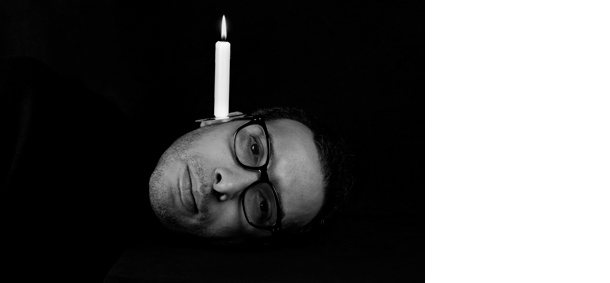
2015, triptych, pigment print on Fine art, 35 x 52 cm, each and 70 x 105 cm each.
Exhibition view from Survival Signs, Jane Lombard Gallery, 2017, New York.
Courtesy of the artist and Jane Lombard Gallery, New York.
Ed. of 5 + 2 A.P.
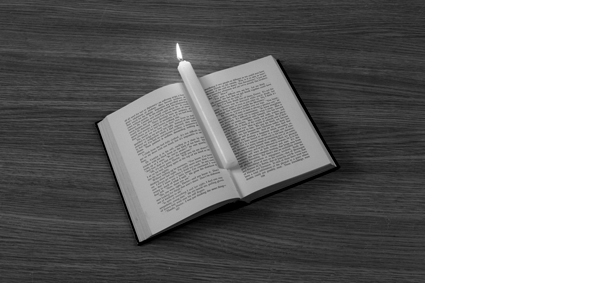
2015, triptych, pigment print on Fine art, 35 x 52 cm, each and 70 x 105 cm each.
Exhibition view from Survival Signs, Jane Lombard Gallery, 2017, New York.
Courtesy of the artist and Jane Lombard Gallery, New York.
Ed. of 5 + 2 A.P.
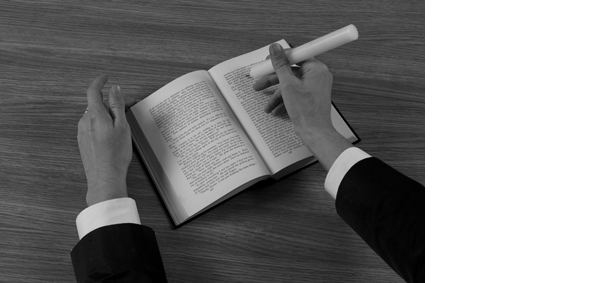
2015, triptych, pigment print on Fine art, 35 x 52 cm, each and 70 x 105 cm each.
Exhibition view from Survival Signs, Jane Lombard Gallery, 2017, New York.
Courtesy of the artist and Jane Lombard Gallery, New York.
Ed. of 5 + 2 A.P.
'' Calligraphy of Fire presents a set of situations, each of which links the idea of knowledge with light, and its absence, as a darkness, a void.
If the burning candle is symbolic of life, illumination, and knowledge, as it is throughout much of art history, in the left hand image
the snuffed candle could suggest an impending darkness, the possible smudges as a form of censorship. ''
Blaire Dessent, May 2016
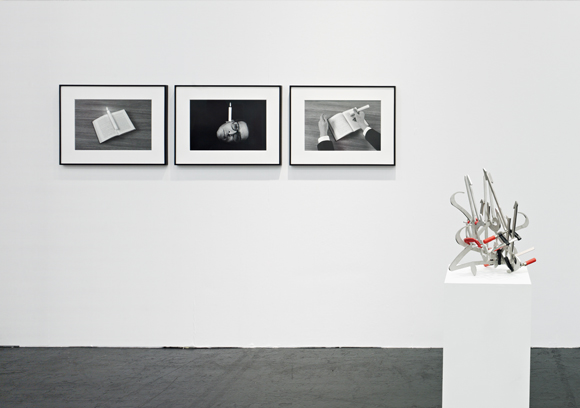
Calligraphy of Fire
Exhibition view from Art Cologne, 2016, Cologne.
Courtesy of the artist.
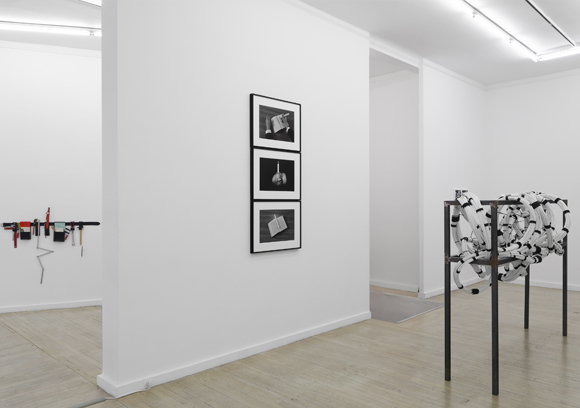
Calligraphy of Fire
Exhibition view from White Matter, Ceysson & Bénétière, 2019, Paris.
Courtesy of the artist.
|
|
|
|
|
| This work was part of 14th Biennale Africaine de la Photographie, Kuma, Bamako, 2024.
Calligraphie de feu est un ensemble de trois photographies en noir et blanc faisant partie d’un corpus plus large de l’artiste explorant la langue, l’écriture, la connaissance et la destruction. Les images de ce triptyque sont énigmatiques, comme si elles donnaient un aperçu d’un rituel privé ou d’un moment incertain.
Sur la gauche, la photo d’un livre ouvert posé sur une table ; les bras d’un homme sont placés autour comme s’il lisait. Dans une main, il tient une chandelle comme un crayon, sa mèche éteinte. Impossible de savoir s’il utilisait la lumière pour lire et qu’elle s’est éteinte, ou s’il a l’intention d’utiliser l’extrémité de la chandelle pour faire des traces sur le livre, rendant ainsi les mots illisibles et noircissant les pages.
L’image centrale est un portrait de l’artiste émergeant d’un fond noir. Il regarde le spectateur droit dans les yeux, sa tête penchée sur le côté, et une bougie allumée sort verticalement de son oreille. Il semble sortir de l’obscurité pour venir dans notre champ de vision, la bougie étant une métaphore de l’artiste en tant que chercheur de lumière et de connaissance. C’est une scène intime, comme si elle représentait un moment de rituel ou de transformation. Dans la photographie de droite, une bougie allumée est posée dans le pli central d’un livre ouvert, posé sur une table vide. Peut-être que la bougie a été négligemment laissée là par le lecteur, mais la disposition est plus précaire que cela, la flamme est trop proche, le risque d’incendie semble imminent.
Pour Fatmi, les livres et la connaissance représentent un moyen de survie, une opportunité, un chemin vers l’indépendance et vers une plus grande compréhension de la vie. Calligraphie de feu présente un ensemble de situations, chacune reliant l’idée de la connaissance avec la lumière, et son absence avec l’obscurité, le vide. Si la bougie allumée symbolise la vie, l’illumination et la connaissance, comme le veut la tradition à travers l’histoire de l’art, dans l’image de gauche la bougie éteinte pourrait évoquer une obscurité imminente, les traces noires représentant une forme de censure. À droite, la bougie allumée offre la possibilité de la lumière, mais si elle est laissée sans surveillance, il en résultera la destruction. Au centre, le portrait de l’artiste suggère un mouvement de l’obscurité vers la lumière, peut-être le chemin vers la conscience de soi, la croissance et même la survie. Les images font aussi subtilement référence au contexte politique global : l’attitude de plus en plus isolationniste de certains politiciens qui choisissent de promouvoir la peur, les frontières fermées et un retour aux « traditions » en réaction contre la mondialisation qui est intrinsèquement sans frontières, numérique et bâtie sur l’information.
Il en va de même pour les mouvements radicaux comme Daesh qui promeuvent un système qui a existé il y a des milliers d’années. Comment cela pourrait-il être possible ? Et pourtant cela se passe. Il y a une peur évidente dans ce retour en arrière radical s’opposant au progrès, et pour Fatmi cela suppose un retour à l’obscurité et une incertitude qui va de pair avec une destruction de la connaissance. Comme certaines réalités de notre monde, les images de Calligraphie de feu demeurent précaires, en équilibre entre deux tendances opposées, laissant au spectateur le soin de décider comment intégrer l’information qu’on lui soumet.
Blaire Dessent, mai 2016.
Traduit de l'anglais par Patrick Haour.
|
|
Calligraphy of Fire is a set of three black and white photographs that form part of a larger body of work by the artist which explores language, writing, knowledge and destruction. The images in this triptych are enigmatic as if offering a glimpse into a private ritual or an uncertain moment.
On the left is a photograph of an open book resting on a table, a man’s arms placed around it as if reading. In one hand he holds a long candle like a pencil, the end of which has been snuffed out. We cannot be sure if the light was being used to read and it has gone out, or if he intends to use the tip of the candle to mark up the book, thereby smudging the words and blackening the pages.
The middle image is a portrait of the artist emerging out of a black background. He looks straight at the viewer, his head tilted to the side, and there is a burning candle placed upright in his ear. He seems to be moving out of the darkness and into focus, the burning light as a metaphor for the artist as seeker of light, of knowledge. It is an intimate scene as if capturing a moment of ritual or transformation. In the photograph on the right, a burning candle is placed along the crease of an open book which sits on an otherwise empty table. Perhaps the candle was left there carelessly by the reader, but the set up is more precarious, the flame too close, the risk of burning seems imminent.
For fatmi, books and knowledge represent a means of survival, of opportunity, a path to independence, and a greater understanding of life. Calligraphy of Fire presents a set of situations, each of which links the idea of knowledge with light, and its absence, as a darkness, a void. If the burning candle is symbolic of life, illumination, and knowledge, as it is throughout much of art history, in the left hand image the snuffed candle could suggest an impending darkness, the possible smudges as a form of censorship. On the right, the burning candle offers the possibility of light, yet if left unattended, the results will be destruction. In the center, the portrait of the artist suggests a movement from darkness into light, perhaps a path to self awareness, growth, and even survival. The images subtly poke at the larger political landscape as well. The increasingly isolationist attitude of some politicians who choose to promote fear, closed borders and a return to “the old ways,” as a revolt against globalization, which is technically borderless, digital and built on information.
It’s the same with radical movements like Isis who champion a system that existed a thousand years ago. How can that even be possible? Yet it’s happening. There is evident fear in this radical shift in looking backward as opposed to forward, and for fatmi that suggests a return to darkness, and an uncertainty that is paired with an erasure of knowledge. Like current realities, the images in Calligraphy of Fire remain precarious, teetering on the edge of both directions, leaving it to the viewer to decide how they process the information at hand.
Blaire Dessent, May 2016.
|
|
|
|